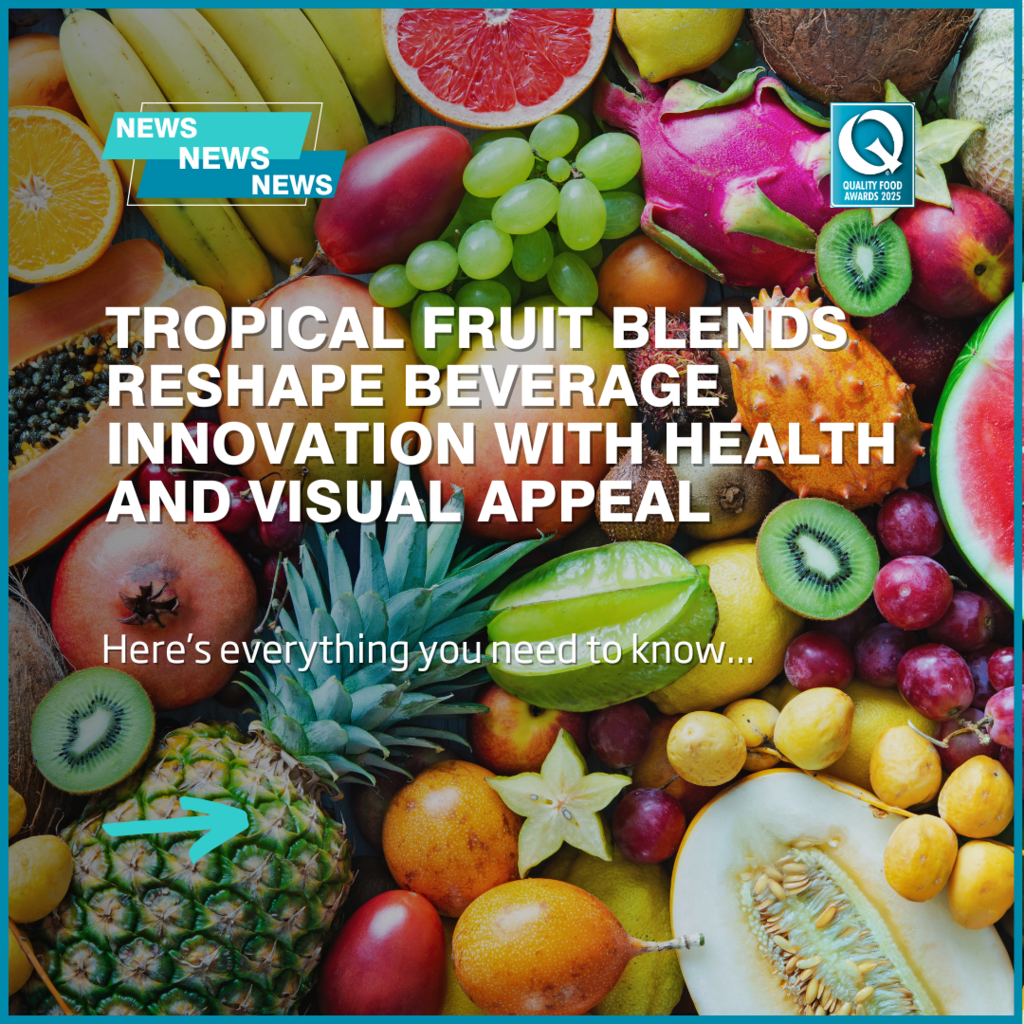
Tropical fruit blends reshape beverage innovation with health and visual appeal
The rise of tropical fruit blends in beverages is driving new health-focused, visually striking products that meet growing consumer demands for natural ingredients, functional benefits, and strong storytelling amid expanding global flavour trends.
In today’s densely packed beverage market, brands are increasingly harnessing the power of fruit blends—particularly tropical varieties—to create emotional connections, drive differentiation, and meet rising consumer expectations around flavour, function, and storytelling. These elements are crucial purchasing influences, with ingredients playing a central role in linking them together, especially through nutrient-rich fruit inclusions.
Experts like Kyra Appleby, innovation and marketing technical specialist at iTi Tropicals, highlight how consumers now seek more than basic refreshment. They want beverages that deliver on bold, globally inspired flavours alongside functional benefits and compelling narratives. Tropical fruits such as passion fruit, guava, mango, acerola, and coconut water are particularly well-suited to meet these demands. These fruits not only provide vibrant flavour profiles and natural health perks—like vitamin C richness or hydration through natural electrolytes—but also deliver vivid colours and sensory experiences that resonate on visual platforms like TikTok and Instagram. Appleby points out their versatility is a key asset, with formats ranging from purées and juices to concentrates and powders, allowing for innovation across product types and processing methods.
The market for fruit ingredients is growing strongly, propelled by health-conscious consumers who prioritise natural and clean-label products. Paul Orosco, category manager at Global Organics, notes data from Innova markets showing significant increases in fruit-based sweeteners and functional drinks consumption. Consumers are scrutinising labels for vitamin, antioxidant, and nutrient content, with manufacturers leveraging concentrates, powders, and not-from-concentrate juices to support innovation and cost balance. The combination of familiar domestic fruits with exotic tropicals offers a strategic blend of approachability and adventure, creating products that appeal broadly while enabling compelling storytelling around global sourcing, functional benefits, and seasonal inspiration.
Health and wellness remain central innovation drivers, but today’s consumers expect functionality paired with excitement and novelty. Tropical fruits are increasingly featured in functional wellness drinks and immunity blends, showcasing natural nutritional qualities that serve more than taste alone. The visual appeal of fruit blends is now paramount, pushing formulations towards striking colour pairings, such as dragon fruit with pineapple or guava with hibiscus, that pop both on shelves and in social media feeds. This trend dovetails with a growing preference for clean-label, simple, and minimally processed ingredients, encouraging brands to formulate 100% juice blends without added sugars or artificial additives. Organic variants of tropical ingredients like mango puree and coconut cream are also gaining importance for brands aligning with “natural” and “organic” consumer demands.
Looking ahead, the popularity of certain tropical-forward blends is expected to rise, with guava, lemon, and strawberry combinations projected to grow as they deliver vitamin C, lycopene, and appealing aromatics suitable for functional beverage categories. Appleby foresees more regionally inspired tropical blends that balance bold, culturally rich flavours with accessibility, alongside botanical pairings that enhance complexity, functionality, and an elevated product profile. Ingredients like coconut water, acerola, and banana are noted for their multifunctional roles in flavour enhancement, nutrition, and texture improvement—particularly valuable in plant-based and non-dairy beverages where natural mouthfeel enhancers reduce reliance on artificial thickeners.
Complementing these ingredient trends is the broader surge in functional beverages offering health benefits beyond hydration or refreshment, including mental clarity, digestive health, and immune support. This category has evolved from niche energy drinks into a multi-billion-dollar market, driven by consumer curiosity and social media exposure to exotic botanicals and fruit infusions. However, experts urge caution, highlighting that some health claims lack robust scientific backing, and advising consumers to carefully read labels and manage intake to avoid adverse effects.
The quest for functional beverages with gut health benefits is particularly pronounced, with nearly 40% of consumers seeking such products. This has opened opportunities for beverage makers to innovate with underrepresented flavours and ingredients, such as botanicals associated with emotional well-being. Mint, for example, is valued for its refreshing, relaxing, and stimulating effects and is finding a place in cognitive health-focused drinks.
Scientific advances in functional beverage development continue to evolve, focusing on incorporating bioactive compounds like phenolics, vitamins, amino acids, and probiotics. These innovations emphasize product stability, sensory appeal, and health benefits, employing advanced technologies such as encapsulation to preserve active ingredients.
In sum, fruit blends—especially those featuring tropical ingredients—are no longer mere flavour enhancers. They are dynamic tools that enable beverage developers to meet modern consumer expectations for health, transparency, and global influences while crafting memorable sensory experiences. As the market expands, the blending of bold taste, functional benefit, clean-label integrity, and visual impact will remain essential to standing out on crowded shelves and captivating adventurous consumers worldwide.
